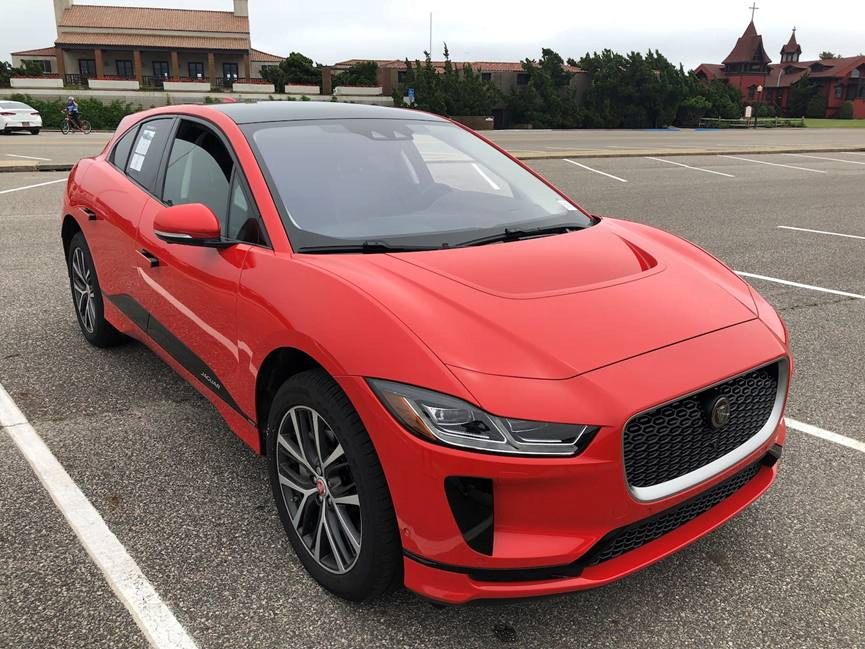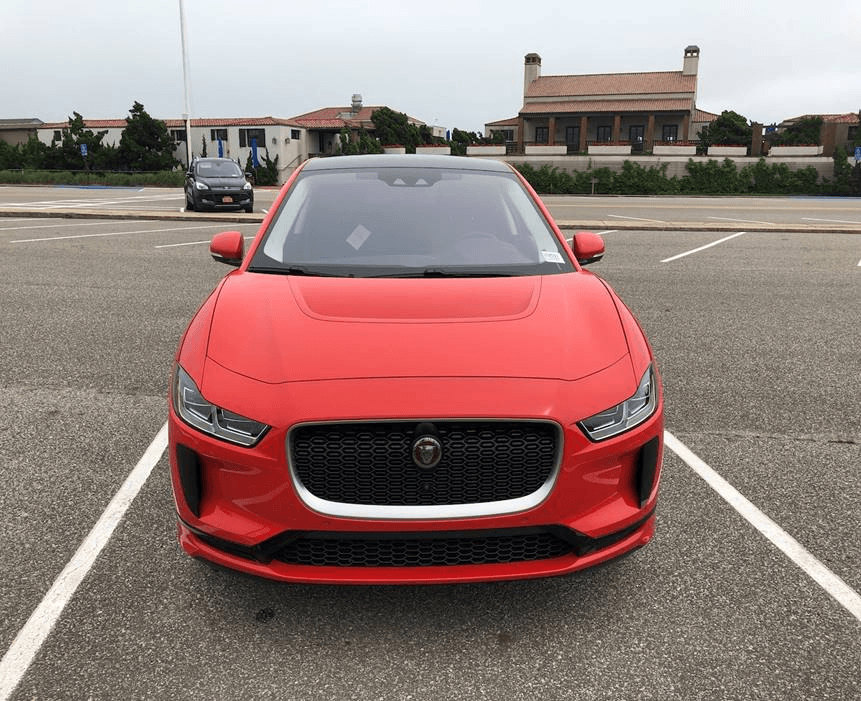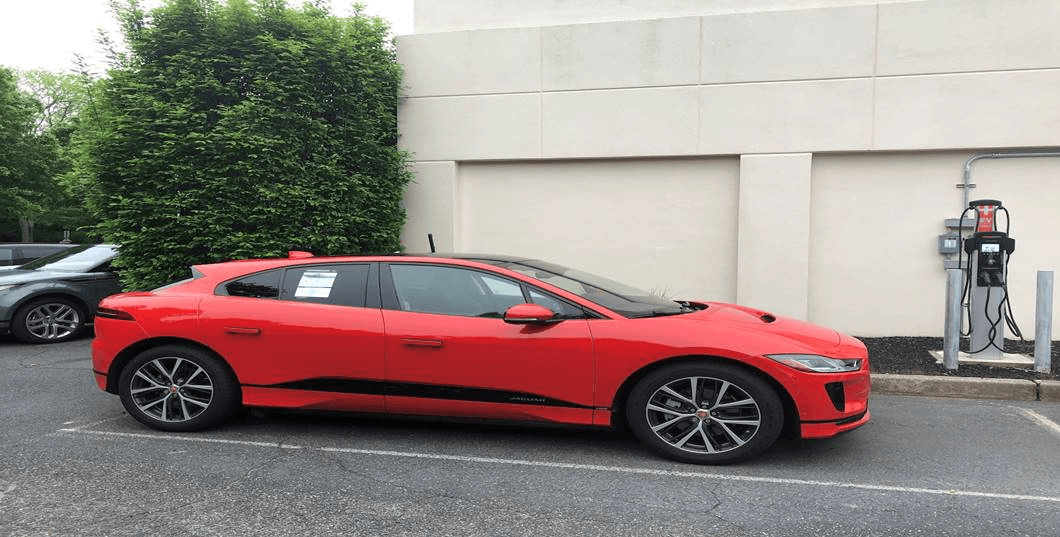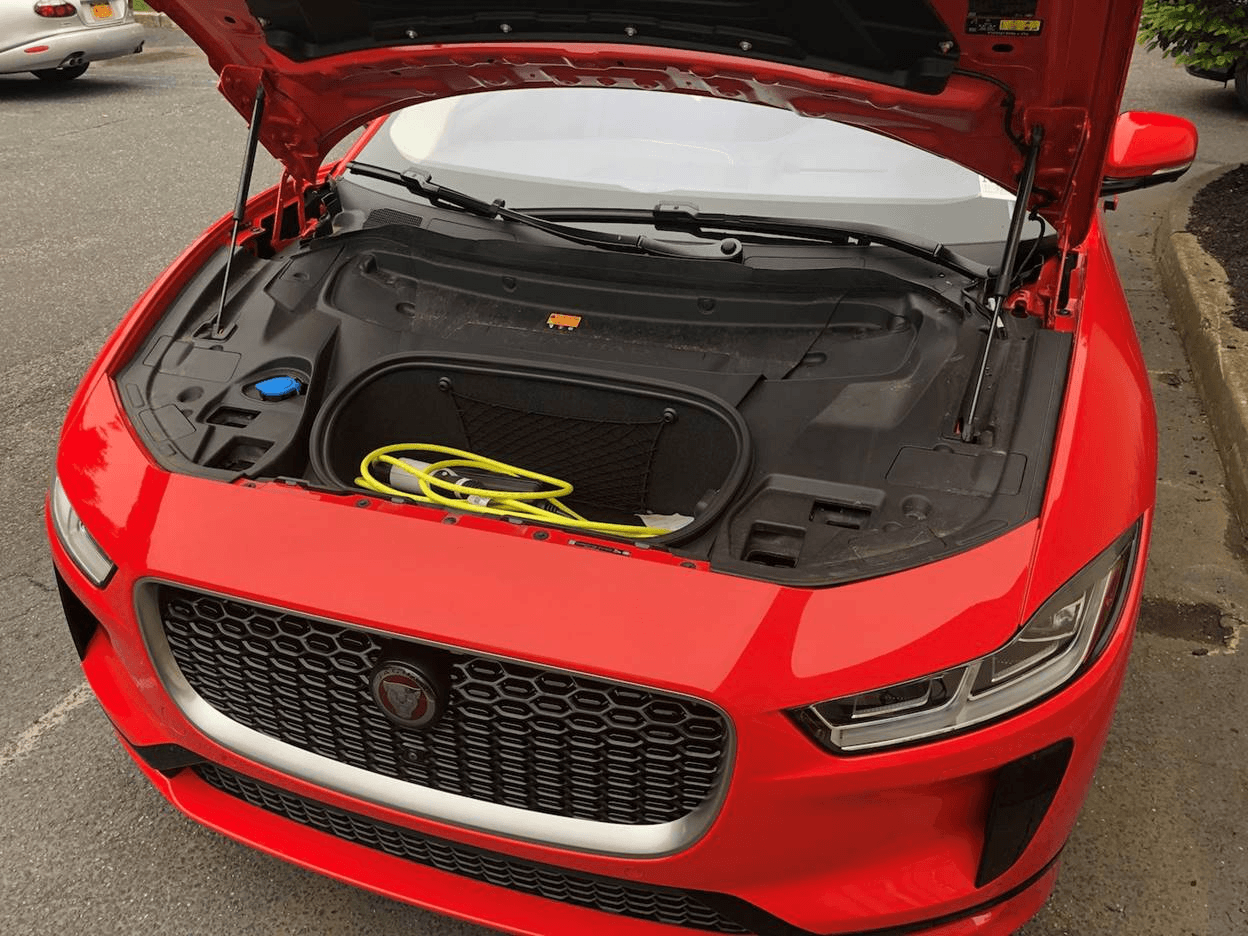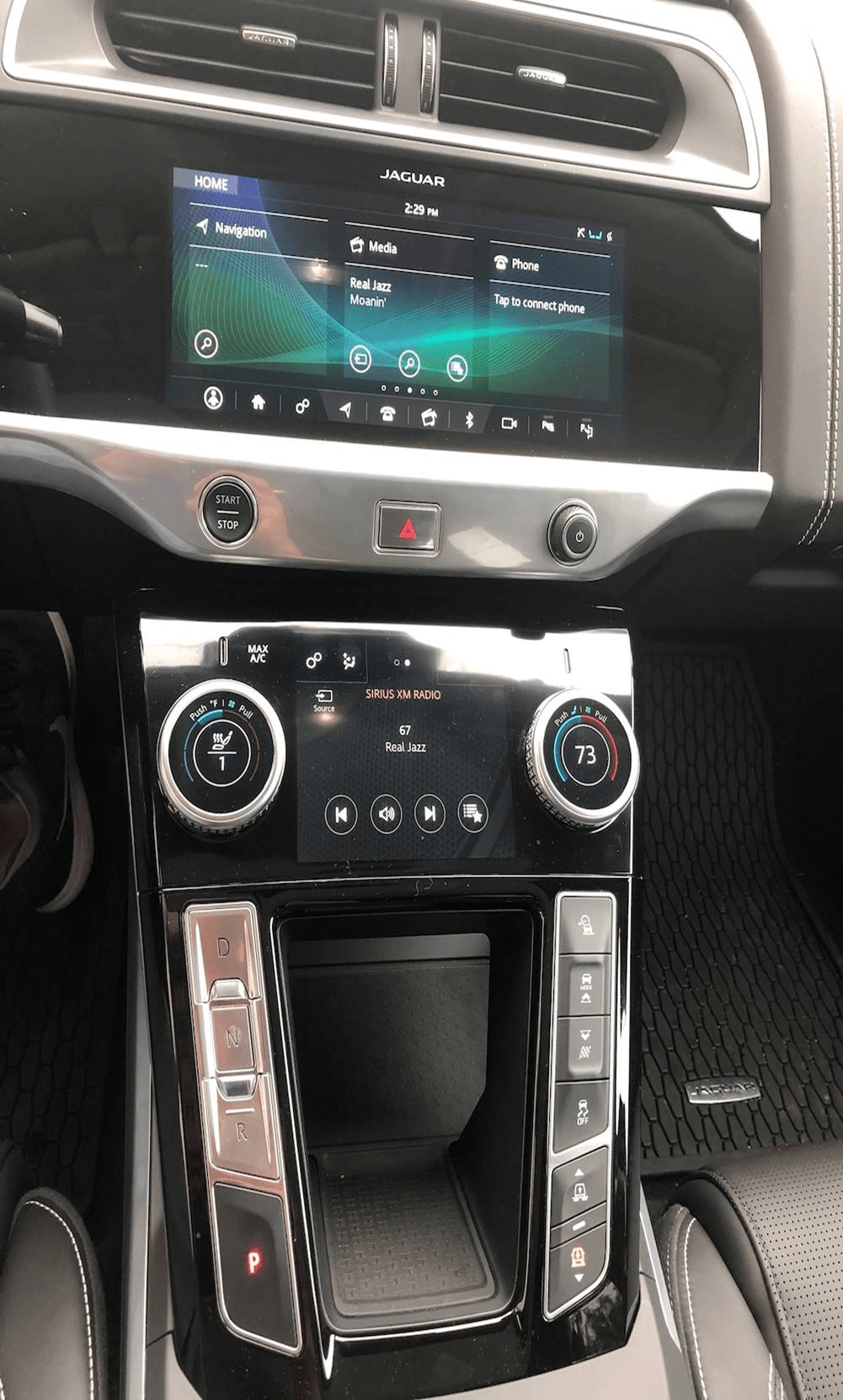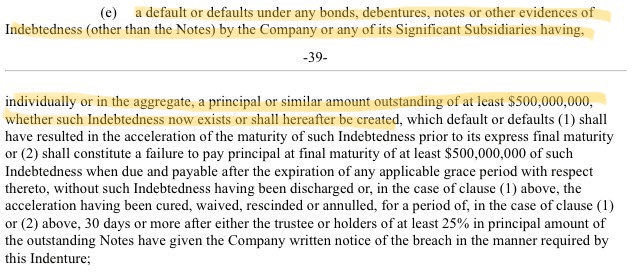Whitney Tilson’s email to investors discussing Kevin DeCamp’s test drive of the Jaguar I-PACE, Tesla Inc (NASDAQ:TSLA) may end up killing itself, but the “Tesla killer” car is no where in sight; and SolarCity.
Here’s some catnip for the Tesla bulls on this email list: my analyst, Kevin DeCamp, a longtime TSLA shareholder and car owner, took a test drive of the Jaguar I-PACE and, while it “looks great and is fun to drive… it is lacking in a few areas where Tesla really shines.” He concludes that “Tesla may end up killing itself, but the “Tesla killer” car is nowhere in sight.”
Q1 hedge fund letters, conference, scoops etc
He may publish this somewhere, so comments welcome!
The Tesla Killer Hasn’t Arrived Yet: My Test Drive of the Jaguar I-PACE
By Kevin DeCamp
As a long-time, devoted Tesla (TSLA) shareholder and car owner (a 2014 Model S), I’ve been reading for years with some amusement about the "Tesla killer" that always seems to be just around the corner. To this day, no competitors have managed to produce an electric vehicle (EV) with range and efficiency matching the 2012 Model S.
But with every major auto manufacturer in the world investing billions to develop EVs, you would think some will start to finally rival Tesla’s line-up, so I read the reviews of the new Jaguar I-PACE with great interest. It was clear that the first real competition had arrived, so I visited a dealer last week and took it for a spin.
On my way there, I tried my best to clear away all of my biases, preconceived notions, and expectations so that I could form a truly objective opinion.
But within the first five minutes, the Jaguar salesman was handing me ammo for my bullish bias. He didn’t seem too enthusiastic about the car and when I asked how to use the touch screen, he told me that one of the biggest problems with new cars is the software. “What happens when this screen goes blank, then what?” he asked.
He then offered to let me take a test drive by myself if I wanted to – he didn’t seem interested in telling me much about it. The sales pitch was, “Here are the keys, go nuts!! Hopefully the software doesn’t crash on you.”
First impressions
As I approached the I-PACE, I first noticed the design and styling, which are top-notch, as you can see by these pictures I took:
Although it’s been deemed a competitor to Tesla’s Model X, the I-PACE is definitely a crossover. While its boxy design makes it appear bigger than it actually is, in reality it’s not much bigger than the Tesla Model 3, with a length, width and height of 184, 75 and 61 inches vs. the Model 3 at 185, 73 and 57, respectively. (The I-PACE has an “off-road mode” which raises the vehicle two inches, bringing the ground clearance to 7.6 inches, which is definitely a great feature.)
Although it has a similar hatchback design as the Model S and X, the smaller rear end is apparent, as you can see here:
With the seats down, the total cargo space is 51 cubic feet. This is significantly less than the 63 cubic feet in the Model S (a sedan). Plus the “frunk” in the Model S is five times larger than the pathetic little 0.9 cubic foot one in the I-PACE, shown here:
I'm sure some will ask, “Who needs a frunk?” But I use mine quite a bit – and also think this is one of the features that represents Tesla’s ground-up EV design that maximizes the benefit of a small EV drivetrain.
Range
The I-PACE has a respectable 234-mile EPA-rated range, surpassing the Audi e-tron’s 204 miles, which is puzzling when you consider that the e-tron has a larger battery pack, 95 vs. 90 kWh. However, in an attempt to increase reliability and charging speed, Audi decided to use only 88 percent (83.6 kWh) of the pack. In addition, the e-tron weighs in at 5,643 lbs. compared to the I-PACE’s 4,702 lbs. These two factors appear to explain the discrepancy.
Both cars trail the Model X’s 255 miles (standard) and 325 miles (long range). When you consider that the standard-range Model X has only a 75 kWh pack with the outdated 18650-battery form factor, you don’t have to be a physicist to see that Tesla’s lead in EV battery and powertrain technology is still substantial.
Another advantage Tesla has is the low drag coefficients it achieves via sleek designs. This materially increases Tesla’s range as drag increases exponentially as speed increases (drag is 4x greater at 70 mph vs. 35 mph). Although there are other factors involved, this was clearly demonstrated with a test on the Autobahn with an average speed of 75 mph by the German rental car company Nextmove. The energy consumption of the e-tron was 23% higher and the I-PACE was 26% higher than the 5,267 lb. Tesla Model X 90D.
As for charging infrastructure, while its competitors are making major strides, Tesla, with its Superchargers and Destination Chargers, is still way ahead for now.
Driving experience
As for the I-PACE driving experience, I was impressed. I’ve been driving an EV for the last five years so I’m accustomed to the thrill of instant acceleration, but for those who aren’t, the I-PACE’s 394 horsepower and 512 pound-feet of torque provided by the dual motors will certainly convert a few petrol heads.
The I-PACE’s air suspension made for a very smooth ride – more so than my Tesla, which was the most expensive vehicle I ever purchased – by far – so I went with the cheaper coil suspension.
The I-PACE’s steering was responsive and, with its low center of gravity, the handling was very tight. The regenerative breaking was decent, but noticeably not as strong as my Model S, especially at higher speeds.
In summary, it was a fun driving experience and it gave me more confidence in my belief that all cars will eventually be EVs.
The interior and software
The interior, as I expected, was more luxurious than the Tesla’s, but the infotainment system detracted from it. At first, it seemed pretty good as I was able to quickly hook up Apple CarPlay through my phone, but the dual screens were sluggish and difficult to navigate. Here’s a picture of the I-PACE’s center console:
As you can see, the dual screens are both very small. For a long-time Tesla owner, it felt like I was going from an iPhone back to an old Blackberry. There was unnecessary complexity, a few useless knobs, and a start/stop button – what’s the point of that!? Tesla got rid of it seven years ago. I walk up to my car, it detects the key, presents the door handles and I get in and drive. This is just one of the many features that leads to a seamless user experience and the brand loyalty that makes me incredibly unlikely to ever drive another car. Simplicity is the ultimate sophistication.
I’ve been pounding the table that the incumbent automakers are lousy at software and are also having a difficult time with the large touchscreens that consumers are demanding. My experience with the I-PACE definitely confirmed these views, but will also acknowledge that the interface will probably be sufficient for most people who haven’t experienced anything better.
However, after hearing the salesman admit that the biggest problem with new cars is the software, I did some quick research. It didn’t take long to find some of the most passionate Jaguar fans expressing major frustrations on the I-PACE message board. Here are a few comments:
- While loving the car, the whole experience so far has been a downright nuisance. I’ve spent an average of two hours a day to keep this car going, which is more than I drove on average a day.
- At the two-week mark, the infotainment and climate control screens stopped working and the heater wouldn’t turn off. Incontrol App also would not work at all...no accurate information because it couldn’t update the data from the car. Opened issue with Jaguar tech support, they said they could not get a signal from the car.
- The infotainment, navigation and voice systems have been discussed ad infinitum and yesterday the bugs struck my car. All media, language, navigation and system settings had booted to factory settings. Worse, after changing the language selection to U.S. English on both touch screen and instrument panel, the voice command could barely recognize basic terminology and the car went back to U.K. English upon car restart. Voice command is now unusable and very frustrating.
- My I-PACE is at Hilton Head Jaguar with the same issue of unable to charge as of May 21. A technical ticket has gone forward to help determine the cause of the problem.
I strongly believe that Tesla’s continued lead in the EV powertrain as well as the integration of hardware and software – and ability to update it over-the-air – is a major competitive advantage. To give you a sense of Tesla’s software lead, GM just announced that most of their models will have access to over-the-air updates by 2023 – eleven years after Tesla began offering them.
Many Tesla bears scoff at the comparisons to Apple, but Tesla really is the Apple of cars. This is why – even with all the drama around the company – it still has the most satisfied customers in the industry.
Ironically, Apple’s in-car system, CarPlay, gets a much lower rating (64% very satisfied) than Tesla’s user interface (86%). Why? Because it lacks the seamless integration that made Apple so special – “it just works” turns into “it works pretty well – sometimes.”
This is one of the pieces of the puzzle as to how Tesla has built such a valuable brand with no advertising – to the dismay of the auto incumbents and the Tesla bears (who mostly won't even admit this point). So yes, Tesla is the Apple of autos – a lousy, capital-intensive, low-margin industry.
On the other hand, I believe the future auto industry will be electric and autonomous and Tesla has a major lead in both areas – clearly in the former, debatably in the latter. In addition, the integration of hardware and software will become considerably more important over time. However, it remains to be seen if Tesla will ever be able to manufacture cars in a sustainably profitable way and transform its technology advantage into something far more valuable.
Conclusion
In summary, the Jaguar I-PACE looks great and is fun to drive, but it is lacking in a few areas where Tesla really shines. That said, it is truly the first real competition for the leader in the EV space. Given the fact that one can still get the $7,500 tax rebate in the U.S. (vs. only half of that for a Tesla), one would think they’d be selling out. However, Jaguar has only sold a mere 1,200 I-PACEs since introducing it in the U.S. and it looks like there is actually a glut, with some dealerships in California offering $10,000 off.
So listen up Tesla bears: take some of the profits you’ve made in the last few months shorting the stock, get yourself a "Tesla killer" I-PACE (saving $17,500 off MSRP with the rebate and discount), put a TSLAQ plate on it and maybe a “shorty air force” bumper sticker, and send me a pic!!
Tesla may end up killing itself, but the "Tesla killer" car is nowhere in sight.
Following up on my recent email from a former SolarCity employee, who described a total meltdown (that, of course, Musk is lying about):
1) A reader writes:
Thanks for sending this. I have a friend who runs a solar installation business. They had been eating Tesla Inc (NASDAQ:TSLA)/SolarCity's lunch on almost every competitive deal for the past 2 years. About a 2 months ago, Tesla slashed prices and instituted a policy of not having any technicians visit sites. According to my friend, they would NEVER leave the installation specs up to the customer as solar installation is very sensitive to many variables in order to get maximum efficiency. Long story short, Tesla is now undercutting them on panel and installation costs on a regular basis. Several TSLAQ contributors have suggested that Tesla is winding down the solar business and liquidating as much inventory as possible. I think this is a very real possibility, especially with the SolarCity convertible bond due to mature on 11/1/19. Several capital structure arbitrage players have claimed that these bonds only have recourse to the SolarCity assets, not the parent company Tesla.
When I asked if I could share this, he said yes and added:
Your request compelled me to find the thread so that you could see it for yourself. In doing so it looks like some additional details have been uncovered with regard to the recourse on the SCTY 11/1/19 debt. @PauloMacro has shared some great insights (in a reply about 4 days ago). It appears he has revised his thinking on the SCTY non-recourse debt based on a clause that triggers a cross-asset default in the event of a default on $500m+ of a major subsidiary of Tesla. I know your friend @glenntongue has also been involved in the discussion. From @umamibomb1 citing the Tesla 2025 bond indenture:
Of course I guess it is a fair question to ask whether or not Zach and Elon are aware of this clause. Seems like they (or at least Elon) had no clue about the details of their lease agreements on the retail locations.
My assertions about Tesla running the solar business in a reckless and unprofitable manner still stand.
Apologies for the confusion! TSLAQ is the best real-world learning resource available today!
(Glenn confirms that “The 500 million would cause a cross default.”)
2) Here’s a series of tweet on this from last Oct (https://twitter.com/Polixenes13/status/1050194409915146240):
It looks like $TSLA is really & truly shutting down SolarCity. This has been happening gradually for two years, but it's accelerated recently as Tesla's cash flow woes have deepened. So, time for a stroll down Memory Lane. $TSLAQ. Let's go to the infamous conference call on June 22, 2016 during which @elonmusk made his case to the analysts. Get ready for some excerpts.
- "And it just became increasingly obvious that as we’re developing the Powerwall ... particularly as we integrate more of the inverter electronics and intelligence in the Powerwall, you really need to take the solar panels and the solar system into account when doing that."
- "But I think as you look ahead to say Model 3, a $35,000 car, well that same person at the same moment, we could sell them roughly an equivalent amount value of solar panels and Powerwall effectively doubling... the sale at that time and then putting all in at the same time. I think the word synergy, it’s like almost sort of dirty word but I think these synergies are really just common sense, like obviously it’s more efficient to do this as an integrated system at the sale & at the installation & in terms of just general maintenance and managing... customer relationships. And I think that makes it kind of a pretty obvious thing to do. So, if we give a special deal to SolarCity and SolarCity is not part of Tesla, then why we’re doing that. So, we can do that if SolarCity is part of Tesla; we can’t do it if SolarCity is a separate company." [Ed. Why not?]
- "So, it just makes things, the execution, I think a lot easier and cleaner, and more effective. So, that’s why I think it’s really kind of a no-brainer. a no-brainer. a no-brainer. a no-brainer." [ok, I added those]
- "So, it’s actually -- we expect it to be a net cash generator, not a user of cash, particularly when taking into account the dramatic reduction in the cost of sales of solar systems sold through our stores. And then, I’d love to talk more about what’s going to happen on the product side... But I can’t talk about material nonpublic plans except to say that I’m very optimistic about those plans." Yes, Solar Roof Tiles, you Charlatan.
- "There is the Silevo acquisition, which we think is the best technology out there for high efficiency, low cost solar panels, and at the same time, very significantly improving the esthetics of the solar panels." Silevo technology now abandoned. New York State the bag holder.
- "And on the cash front, we don’t expect SolarCity to have material impact on future cash needs. Yes, I don’t think it’s going to make much more difference really. And we should see positive cash flow by the end of the year. I mean my intuition about this could be wrong but from my standpoint, this makes Tesla’s future execution easier not harder, because it’s just getting increasingly unwieldy to work with SolarCity on an onsite basis. We really need to have an integrated product. So, I think that speaks to sort fundamental economic goodness of the transaction. And it will be harder if we remain two different companies.
- But looking ahead, particularly to next year, selling Model 3 something in the order of $35,000 car, if we are selling Powerwalls and solar systems of comparable value and doing so in the same sales footprint with the same person, the first order approximation. And then, on the installation and setup side, it’s one crew instead of -- and one visit instead of two to three visits. I think it’s -- one could argue about like is it sort of 20% reduction, 30% reduction, 40% reduction, but it’s pretty significant. SolarCity also is preparing to turn out with the solar panels that as a consequence of a Silevo transaction couple of years ago that significantly improve efficiency and the esthetics of roof. And I think the aesthetics matter a lot. And I think it’s -- every element of it is very reasonable; it’s nothing that’s out of whack about the proposal; it’s sort of extremely normal to have acquisition premium of that size. It’s sort of quite a bit lower than for example say LinkedIn." [Ed. Bagholder gold]
- "But, I’d just really want to emphasize that I have zero doubt about this, zero. Arguably we should have done it sooner. At the board level, yes. I mean, like the board opinion is unanimous for both companies. [W]e’ve tried to do this in the way that’s as fair as possible and really going beyond what’s legally required and to make this not just legally correct, morally correct.”
- “So, at Tesla, we’re -- a lot of that’s been to become a world’s best manufacturer. And I really mean that. That’s like I’m highly confident we will be the world’s best manufacturer. And then aesthetically speaking, the Silevo panels look better, they look a lot better. And if it’s done right, we can make your roof look better with solar panels than without. This is a night and day difference. Yes, I think the various assets that we would be acquiring are the other installers, the installation team of SolarCity, and a lot of people trained and doing the permitting and the paper work and all the complexities that exist in municipalities throughout the country and understanding how to deal with 37 different roof types and having efficient logistics infrastructure for doing installations, and then I mean I think some strengths in the SolarCity sales side that we can take advantage of."

